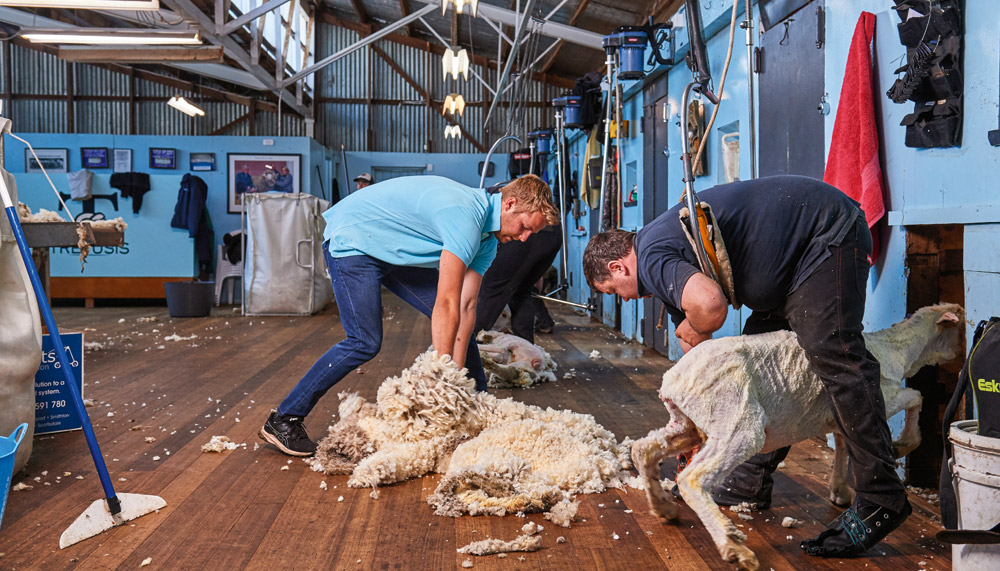With sheep numbers at a 100-year low, wool growers can once again pull in good returns for their hard work.
Story + Photo Cormac Hanrahan
Beneath the saw-toothed roof of Georgina Wallace’s sheep shed at Trefusis, an hour south of Launceston, Tas, shearer Blair Kipling bends to his work and the creamy fleece of a stud ram hogget spills to the board. Shed hand Chantelle Cook sweeps away the scraps as wool handler Paul Lane-Jones scoops up the fleece, takes four quick steps to the end of the classing table, plants a foot and heaves himself forward like a fast bowler at the crease, unfurling the fleece across the slats.
Scenes like this, replicated in thousands of shearing sheds across Australia, produce our roughly 310,000-tonne clip, and mark the beginning of wool’s journey through a long and complex global supply chain underpinned by the age-old tug of war between supply and demand.
Amid strong global economic conditions, the four years to August 2018 saw the price of wool reach historic highs. But by March 2020 the COVID-19 pandemic was beginning to disrupt everything from school fetes to global shipping. As economies shut down and people mothballed their wallets, demand for wool dropped, and by mid-2020 the price was at a 10-year low. But now, a little over a year later, as European economies move forward in step with vaccination programs, demand for wool is again growing, and an air of optimism is rising to mix with the heady odour of lanoline, urea and sweat in shearing sheds around Australia.
This story excerpt is from Issue #139
Outback Magazine: October/November 2021









